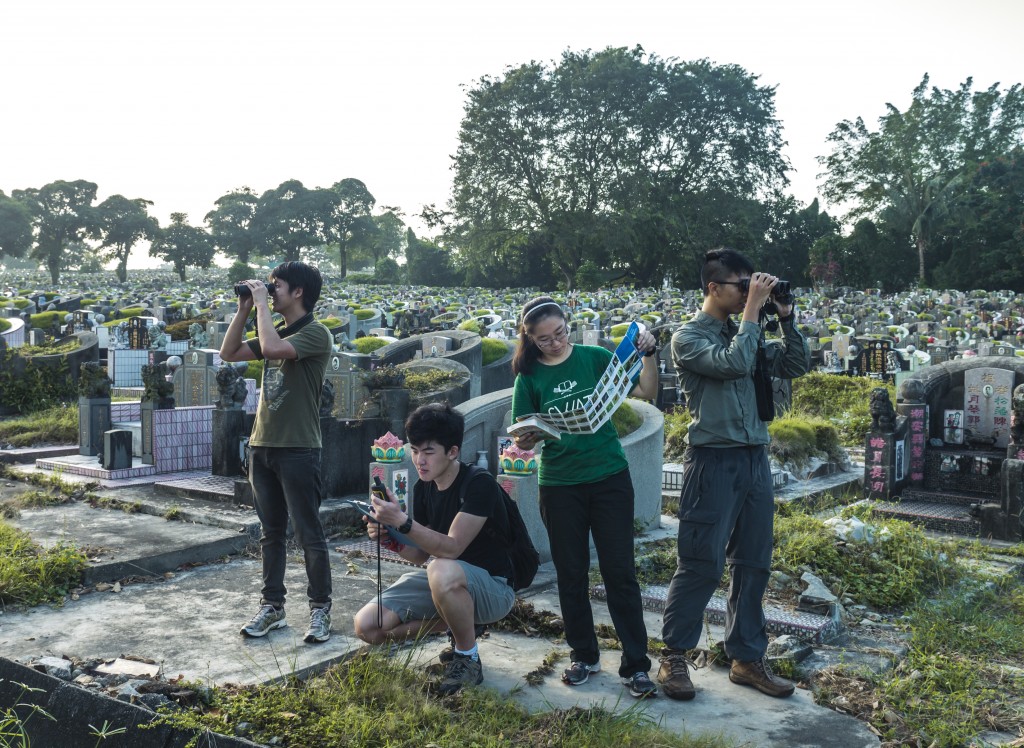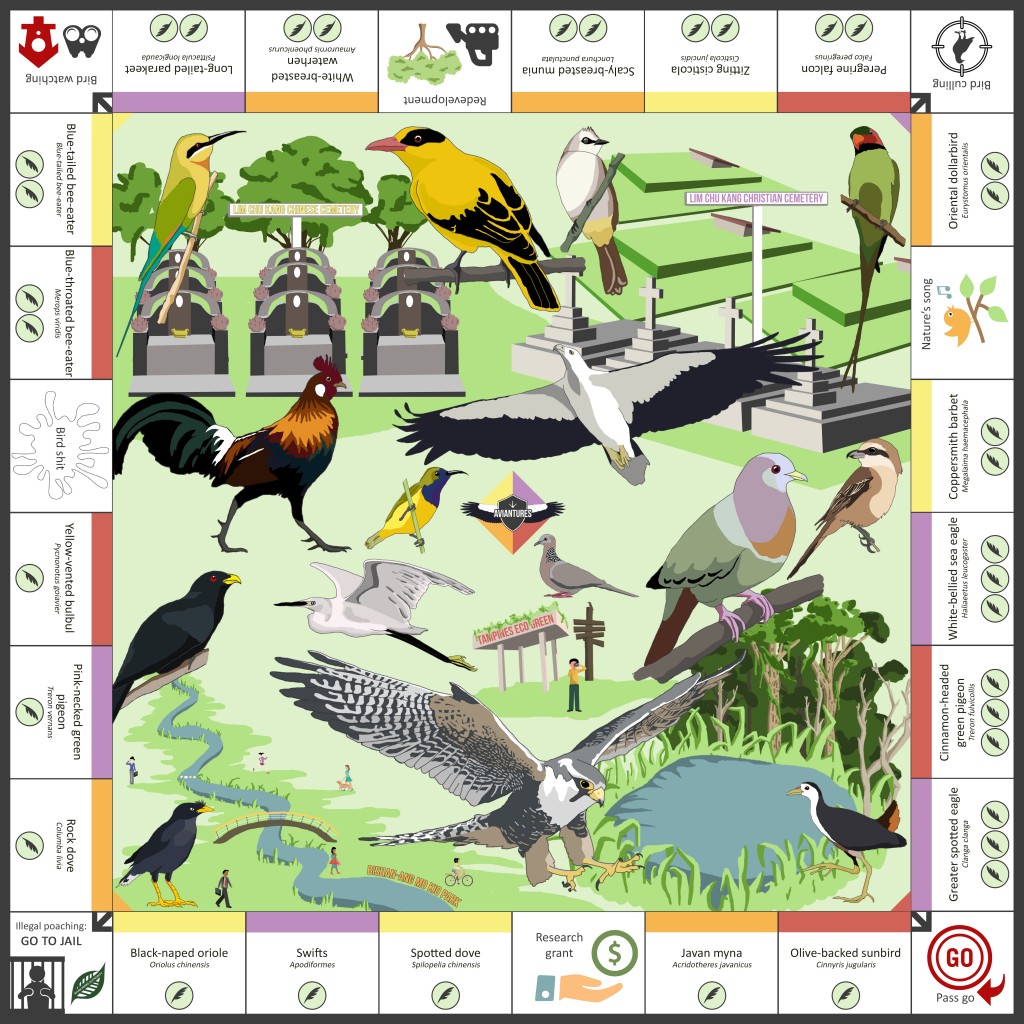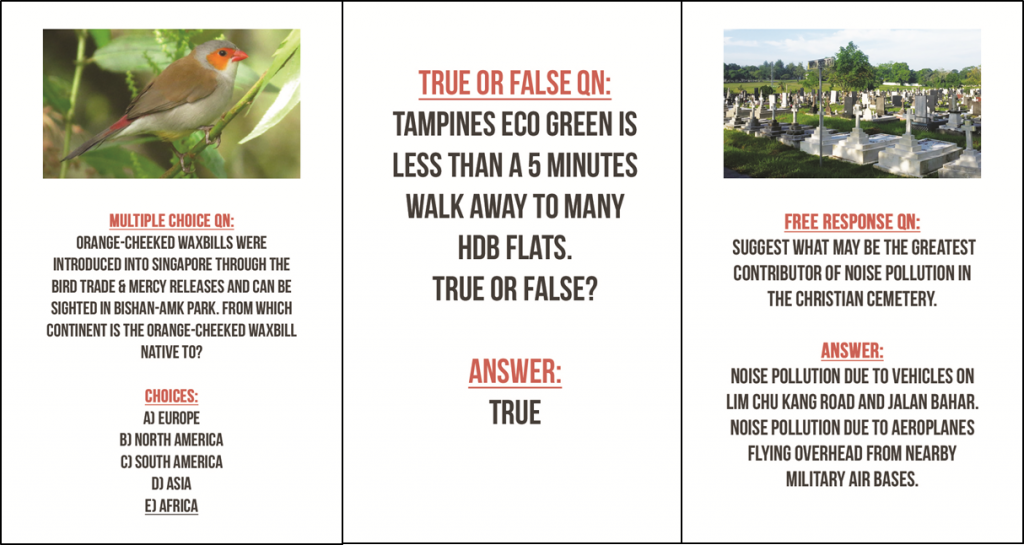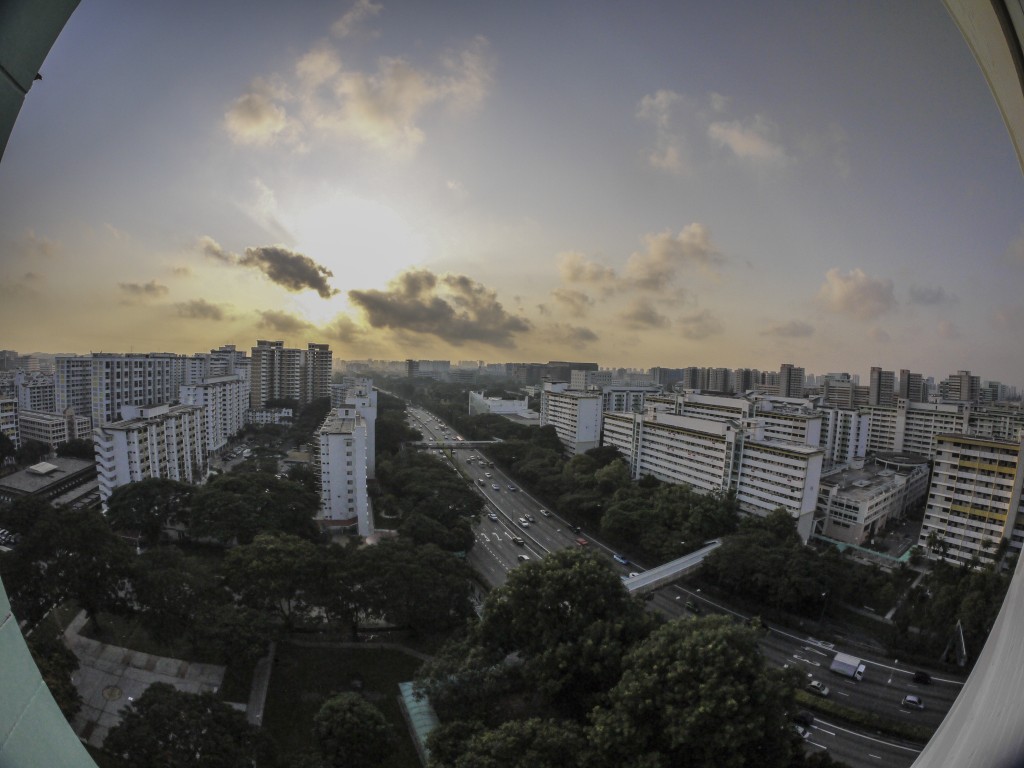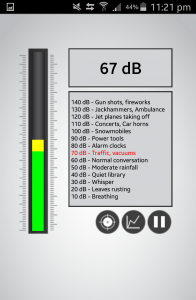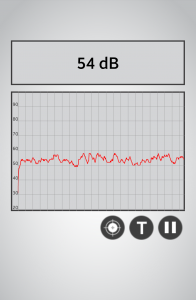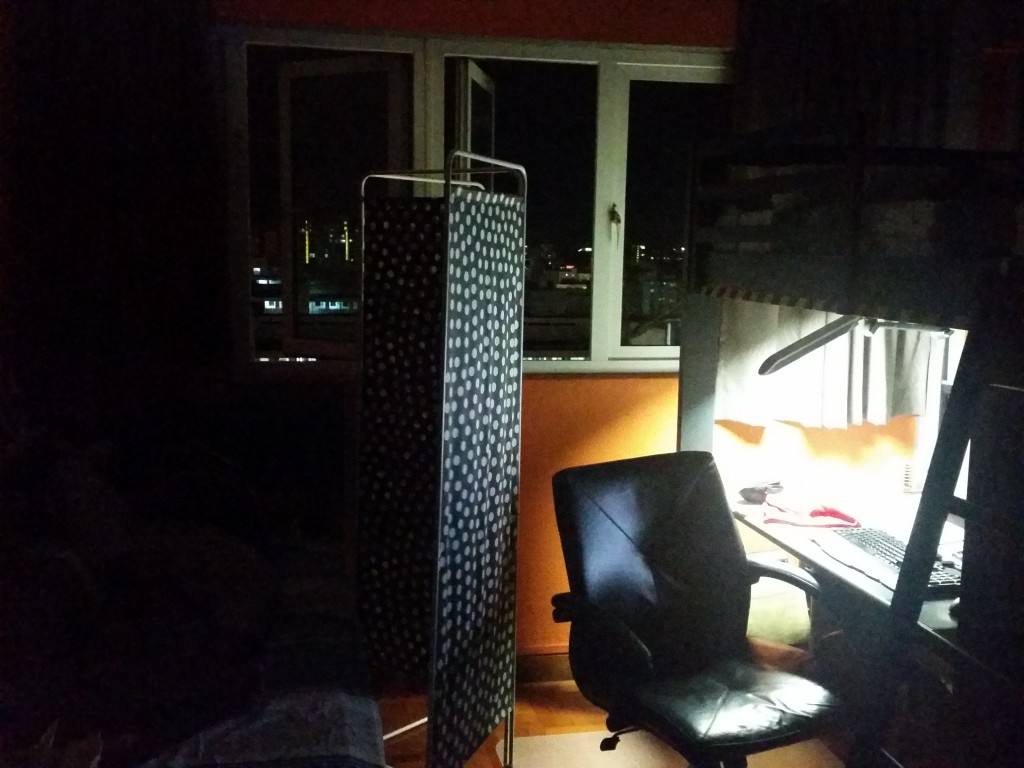Otters in urban environments
In this week’s class, we have looked at biodiversity in urban environments. Most examples brought up were about birds and bats, with very little mention about larger mammals (except for the coyote and cougar one). Here in Singapore we have few of these mammals that have established in urban environments. They include the common palm civet, long-tailed macaque as well as the smooth-coated otter. I would like to take this platform to write more about the adorable and highly intelligent smooth-coated otters that have been appearing in the news in recent years.
I started working with the smooth-coated otters about 8 months ago when I started my UROPS investigating the home-range and diurnal activity pattern of smooth-coated otters in urban environments. Following this, I did an internship with Beach House Pictures and helped with camera trapping and filming of the smooth-coated otters for Wildcity 3 (2016, Channel News Asia) and Otter City (2016, National Geographic Wild).
A little history about how populations of smooth-coated otters established over the years.
Smooth-coated otters (will be referred to as otters subsequently) used to be around in the 1960s, but disappeared throughout 70s to 80s due to the reclamation of Singapore’s shores (disrupted habitat and water quality) (Sivasothi & Nor, 1994). However, since 1998, the otters were recorded to have established first in Sungei Buloh, followed by Pulau Ubin/Serangoon Reservoir region. Their return to Singapore is due to both the push and pull factor. Pull factor would be that reclamation in Singapore had largely stopped and that the habitat returned and water quality improved. Push factors would be that our neighbour in the north, Johor, had a reclamation project called Project Iskandar and disrupted habitat and water quality over there (Theng et. al., 2012).
Post 2012, saw an increase in sightings of the otters throughout Singapore, particularly in Tanah Merah/East coast region as well as within Marina Resevoir. The otters also established itself within Bishan-Ang Mo Kio Park in early 2015, which is 12km upstream of Marina Reservoir, connected by the Kallang River. Usually when the public encounter otters in highly urbanised environments like Bishan-AMK Park and Marina Reservoir, they often ask: “Where do the otters come from? Is it release from the zoo one arh?” From the timeline of sightings over 2012-2014, it suggests that the otters swam down the east coast and populations established in these unoccupied habitats (Sivasothi, pers comm).
The success of smooth-coated otters in urban environments
In this segment, I will try to answer why smooth-coated otters are successful in occupying urban environments in Singapore. There are 3 main reasons for this:
- Food
- Smooth-coated otters are mainly piscivorous, but are able to accept quite a wide diet as well, and have been recorded in other countries to consume a wide variety of fish, prawns, crabs, amphibians etc. in various studies (Theng & Sivasothi, 2011; Abdul-Patah al., 2014).
- There seems to be sufficient food available in Singapore’s urban waterways (reservoirs, Bishan-AMK Park etc.) to support the current smooth-coated otter population.

Smooth-coated otters feeding on a peacock bass.
Photo credits: Jeffery Teo

Smooth-coated otters in Bishan-AMK Park feeding on a catfish.
Photo credits: Max Khoo
- Urban habitats suitable for day-to-day use by smooth-coated otters
- Smooth-coated otters are semi-aquatic and require access to land to survive as well (Kruuk, 1995). In the day, they use dry areas for grooming (rolling on grass/sand/soil to realign their fur so that it can better trap air when they are underwater) and sprainting (the act of defecation. A gelatinous substance is also released and is used to mark its territory).
- As such, riparian zones are hugely important for otter’s survival. They need to be able to get up to land, and this is only possible if the riparian zones are gentle sloping as opposed to vertical concrete walls of a canal. They were able to adapt to urban environments such as Serangoon Reservoir and Gardens by the Bay because the walls of the reservoirs are sloping. They were able to use Bishan-AMK Park because the river was naturalised and there is gentle sloping riparian vegetation, allowing the otters to traverse between land and water easily.
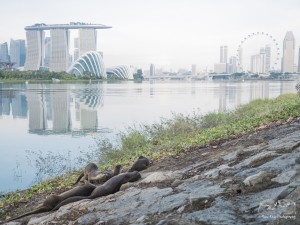
Smooth-coated otters in Marina Reservoir are able to access the adjacent land area by climbing up the sloping seawall. Photo credits: Max Khoo
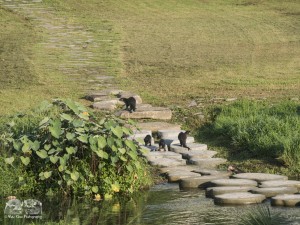
Smooth-coated otters in Bishan-AMK Park are able to access the adjacent land area as the riparian area is gently sloping. Photo credits: Max Khoo
- Apart from the 2 above uses, suitable resting/sleeping area is also important for them.
- In the wild, the holt (the term for their resting site) of smooth-coated otters varies. They can dig a hole in a sand bank and use as their holt, create a hole from tall grass e.t.c. Even though the waterways where some of the otters in Singapore are urbanised, there are some areas with natural holts that the otters use that is just beside an urban waterway. For example, the otters are likely resting on Coney Island (natural) and using the urbanised Serangoon Reservoir.
- Some otters are also able to exploit urban sites as holts (Bishan-AMK otters established their holt in a canal), which suggests that they are adaptable to urban environments.

A smooth-coated otter seen entering a natural holt in Ulu Pandan. Photo credits: Jeffery Teo

Near Bishan-AMK Park. The smooth-coated otters used to live in this canal. Photo credits: Jeffery Teo
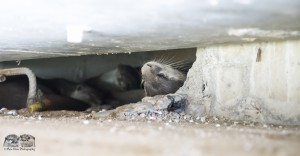
Smooth-coated otters in an urban holt. Photo credits: Max Khoo
- Able to survive
- Little natural predators in Singapore
- Smooth-coated otters have few nautral predators, and hence can survive and establish in Singapore. This is especially so in urban areas, where the only ‘natural’ predator would be stray dogs (they’re not really natural, hence the inverted commas). There have been records of interactions of otters and stray dogs in Marina Reservoir area.
- Humans generally well-behaved
- Fortunately, apart from that 1 fishing-hook incident, Singaporeans generally have not tried to harm the otters. The NParks staff at Bishan-AMK Park and OtterWatch did a wonderful job in their education and outreach campaign and the public is generally well-behaved when they see an otter. Hence, some otters, especially the Bishan-AMK family, is habituated to humans and urban environments.
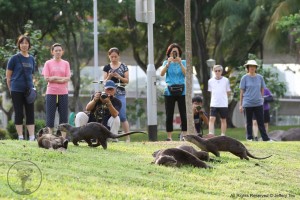
Otters and humans in Bishan-AMK Park. Photo credits: Jeffery Teo
Smooth-coated otters: Urban adapters
So these are the reasons why smooth-coated otters have been successful in Singapore’s urban environments. With these reasons, the smooth-coated otters can be considered as urban adapters. And just last week, 5 more otter pups were born! I am very happy that Singaporeans are able to enjoy wildlife within our city, and do hope that we try to conserve them as long as possible.
Link: https://www.facebook.com/snail.fast/videos/581998451954011/
Other stuff:
For updates on otter stuff in Singapore, do like and follow OtterWatch Facebook page!

Link: https://www.facebook.com/OtterWatch/?fref=ts
Also, do check out www.wildcity.tv to watch Wildcity 1 and 2 if you have not. This 2-part series documentary did a really good job documenting wildlife (both episodes featured otters) in Singapore and Wildcity 2 focuses on urban wildlife!
Lastly, Wildcity 3 will be out pretty soon on Channel News Asia (End March), and will feature more otters along with other awesome animals! Do keep a lookout!
References:
Abdul-Patah, P., N. Nur-Syuhada, S. Md-Nor & H. Sasaki, 2014. Habitat and food resources of otters (Mustelidae) in Peninsular Malaysia. The 2014 UKM FST Postgraduate Colloquium, 1614: 693-699.
Kruuk, H., 1995. Wild otters – predation and population. Oxford University Press, Oxford. 290 pp.
Sivasothi, N. & B. H. M. Nor, 1994. A review of otters (Carnivora: Mustelidae: Lutrinae) in Malaysia and Singapore. Hydrobiologia, 285: 151-170.
Theng, M. & N. Sivasothi, 2011. Status, distribution and diet of the smooth-coated otter Lutrogale perspicillata (Geoffroy, 1826) in Singapore. Unpublished UROPS, National University of Singapore.
Theng, M., N. Sivasothi & H. H. Tan, 2012. Autecology of the Smooth-coated Otter Lutrogale perspicillata (Geoffroy, 1826) alond the Johor Straits, Singapore. Unpublished honours thesis, National University of Singapore.
